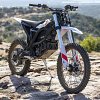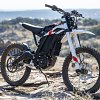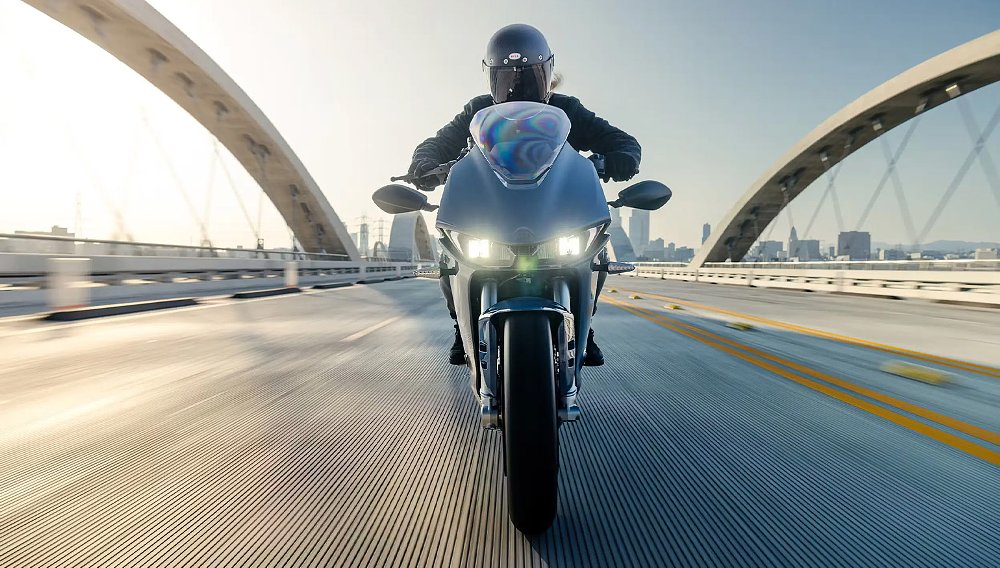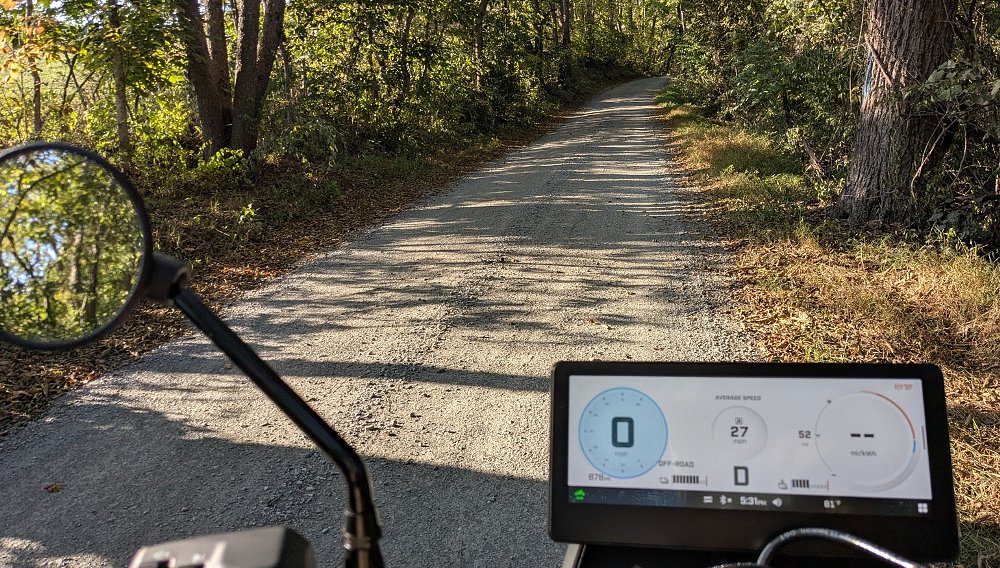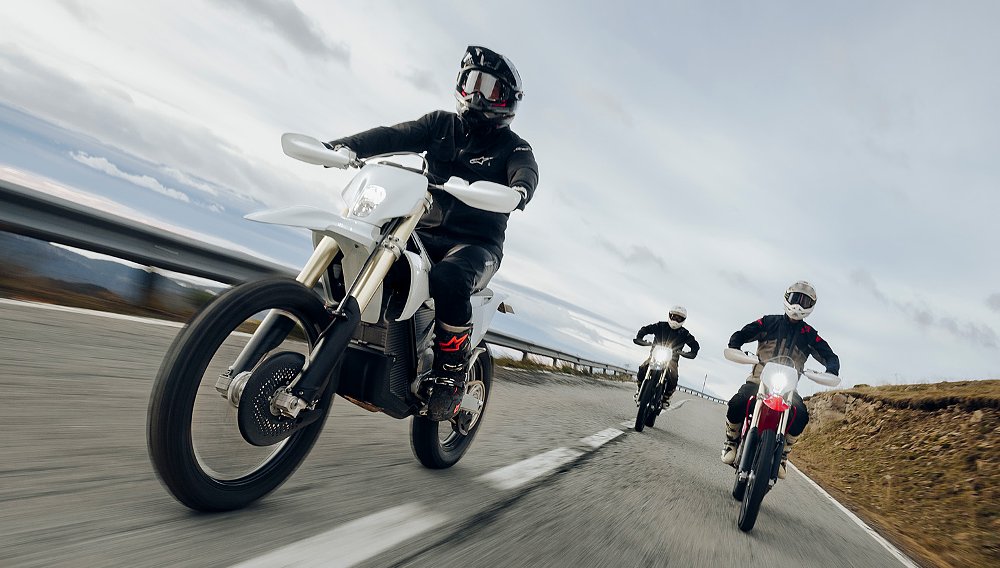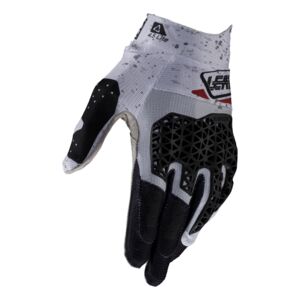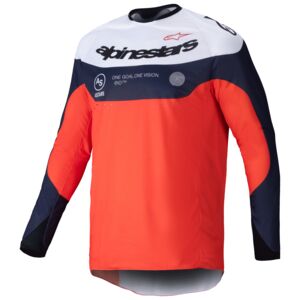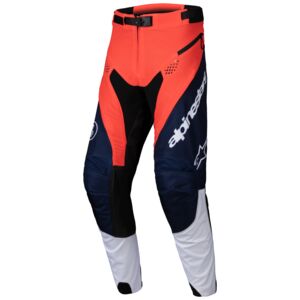It's really easy to hate on electric motorcycles. They are expensive, have crippling range limitations, and to be frank, oftentimes feel like they weren't designed by or intended for "real" motorcyclists. But when Zero first announced the X line at the EICMA show last year, my ears perked up immediately.
That's because I've gotten to know several of Zero's U.S.-based staff over the years and there is a common thread: They like to race dirt bikes in their free time. Next year, Zero celebrates 20 years in business and the new X line is a callback to the prototype that started it all: a lightweight electric trail bike. But does their ode to the original do it justice? I flew to Austin, Texas to find out.

Zeroes in new territory
Despite that original prototype, Zero's line until now has consisted of street-legal motorcycles, from the lightweight FXE to the $25,000 DSR/X. But with brands such as Talaria and Surron finding success with electric dirt bikes, Zero is moving into the off-road space with the smaller, 139-pound XB and the 223-pound XE, both with swappable batteries.

The XB's 49-inch wheelbase and 139-pound curb weight aims directly at Surron's Light Bee X, which you might be familiar with as the de facto weapon of choice for tweenage suburban hooligans terrorizing your local cul-de-sac. The XB is 14 pounds heavier, despite its similar scale, but boasts dual 19-inch wheels, and a 2.4 kwH battery designed to be easily removable from the frame for hot swapping, or just to make charging a bit easier. On a standard 110-volt outlet, you can expect a 0-100% charge in three hours with the included 800W off-board charger, but Zero offers a 1500W quick charger that cuts that time in half.

It's worth noting that Zero quotes a 0-95% charge at 2.5 hours on its website "because the charging rate/speed is linear within this range." If you’re new to EVs, the last five percent of battery charge is the slowest, as charge rates drop substantially to prevent damage to the cells. I like to think of it as filling up a large glass with water and carefully adding the last few drops to take it up to the brim.
Charging the XE looks largely the same, but its larger capacity battery demands more time at the same charge rates: 5.5 hours for a full charge on the included power supply, or 2.5 hours on the accessory fast charger.
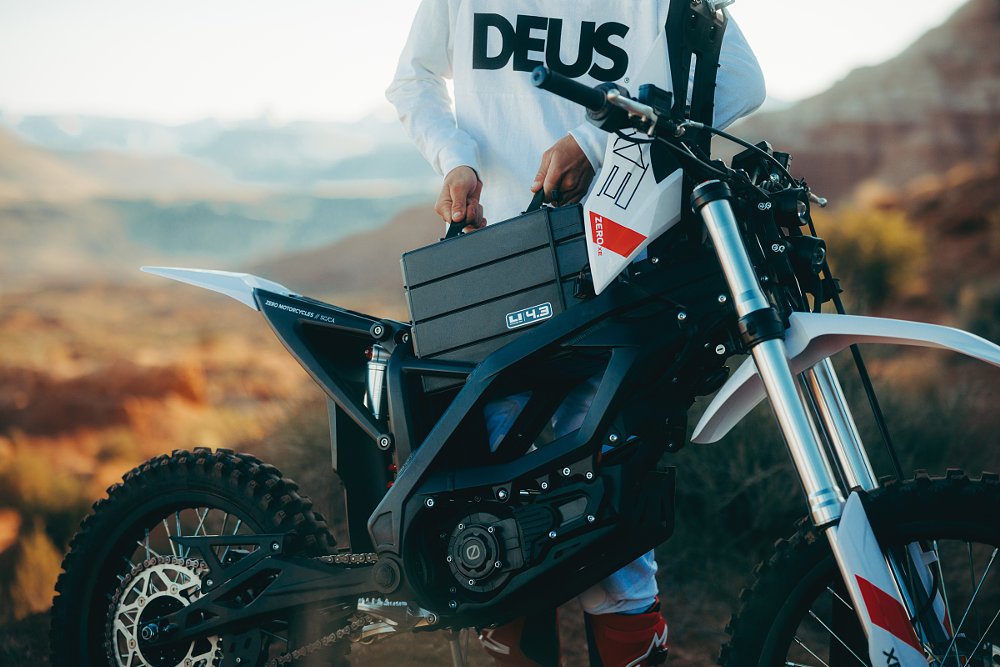
The XB and XE are also Zero's least expensive models, but pricing is a little more complicated, due to today's international trade situation. The "standard" MSRP is $5,095 for the XB and $7,395 for the XE, but that includes "import fees." Buy before November 30 and Zero doesn't apply those fees, so the current MSRP is $4,395 for the XB and $6,495 for the XE.
Riding the Zero XB and XE
My first taste of the X line was aboard the bite-sized XB, which Zero was very quick to point out is intended for riders of a much smaller stature than most journalists in attendance. At five feet, 11 inches tall with a 32-inch inseam, I found the bike to be really compact, but more usable than I would have expected, especially if you are comfortable riding dirt while sitting down. That being said, even my spry 31-year-old back started to ache after about an hour in the saddle. A few of the XBs in our demo fleet had a taller accessory handlebar fitted, but this felt more like a Band-Aid for parents who want to steal their kids' bikes for a quickie after curfew.
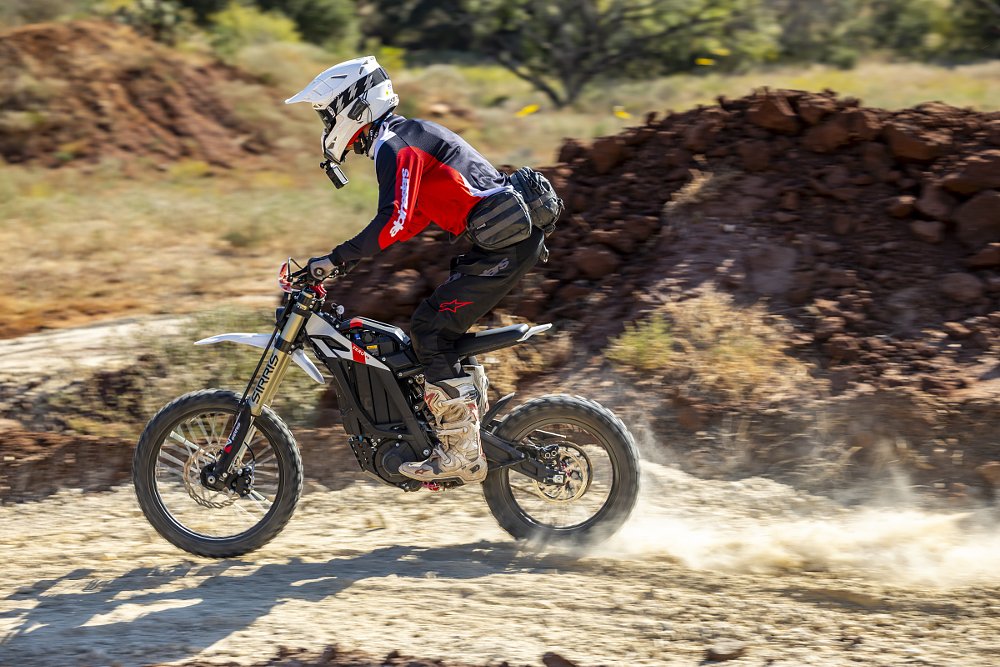
On paper, the XB is a toy, albeit a very fast one thanks to its listed rating of 275 foot-pounds of torque (see Ari's explanation of why torque figures on electric motorcycles are not directly comparable to what you are used to seeing for internal-combustion motorcycles with transmissions). I didn't have super high expectations for its true off-road capabilities, especially when glancing at some of its mountain-bike-esque components. I've ridden a handful of Surrons and Talarias in the past and their suspensions, in particular, were always a big let down. For me, this is where the XB really stood apart from its competition.
Our first moments on the XB were spent in an enduro playground at Austin Moto Adventures littered with sand washes, rocky hill climbs, whoops, and some pretty substantial jumps. As a 160-pound intermediate off-road rider, I couldn't get the bike to bottom out, and neither did a colleague of similar weight and greater bravery who was launching off kickers four feet high to flat ground. Another rider in our group above the 230-pound mark was happily surprised at how planted the bike felt, ripping through a set of sandy whoops at speed. Both ends of the XB's suspension are fully adjustable, with 200 millimeters (7.9 inches) of travel in the front and 176 mm (6.9 inches) in the rear. I did have the opportunity to ride an XB with the accessory Sirris suspension and moto tires, which felt like a great demonstration of this bike's potential, but considering the XB's price point, I'd probably just leave it stock.
For a "toy," the XB is seriously capable. It comes preset with three ride modes, ECO, Standard, and Sport. Despite its instant torque and 50 mph top speed, the power delivery is phenomenal and incredibly natural to modulate, presuming you are in ECO or Standard. The same rings true of the bigger XE I hopped on later. Just be prepared when you flick it into Sport mode.
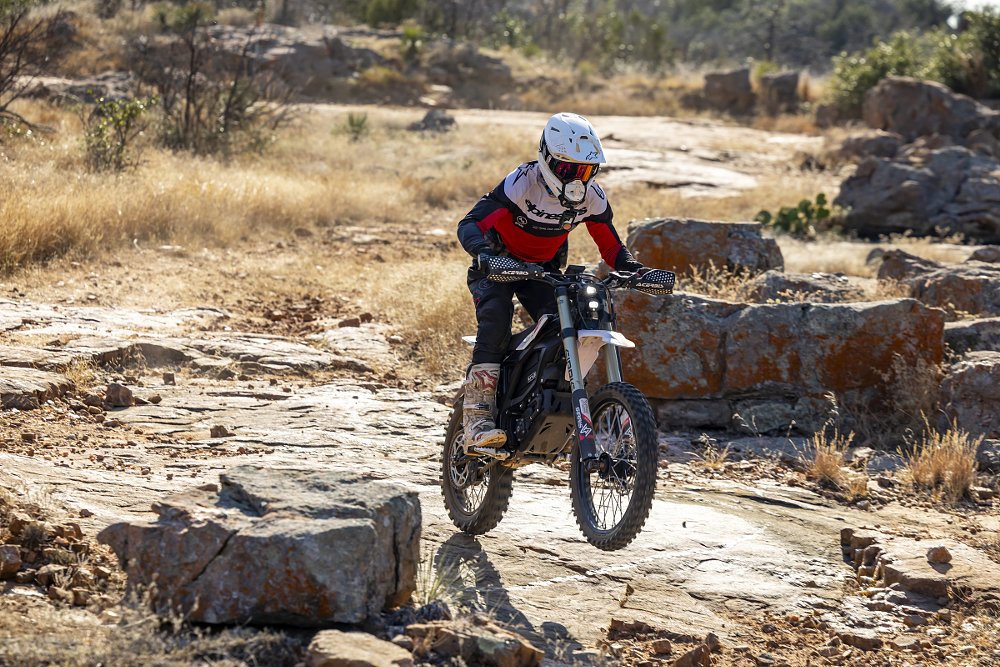
After a quick lunch break, I threw my leg over the XE and the ergonomics immediately felt more familiar. Bigger wheels. Bigger weight. Bigger torque. The XE is just bigger. And so was the fun factor. A contact at Zero warned me before I rode the XE that "even the engineers said Sport mode is too much," which I chalked up to a marketing tactic, but in retrospect they might have been trying to save my life. The XE touts 70% more torque than the XB, and despite its top speed being only three miles per hour faster than its little brother, it gets there a hell of a lot quicker. I don't think I've ever received a batch of photos of myself from a media ride with more wheelies in them (mostly because I suck at them) but the XE was a simple crack of the throttle away from becoming a unicycle at any given moment.
The softer ECO riding mode is perfect for technical climbs or newer riders, while Standard mode provides the most linear power delivery. Sport mode is violent, and almost uncontrollable on anything but the highest traction surfaces. It was fun to play around with at first but really feels like a "just because we can" setting.
During the course of the day's riding, we switched among bikes that were equipped with different options and accessories. I know I mentioned above that the optional Sirris suspension was overkill on the XB, but on the XE, paired with some proper knobbies, it elevated the XE to an entirely different level. Man those forks are sweet.
While the XE certainly felt heavier than its little brother, for a full-sized rider the difference isn't as noticeable as you would expect. Most of my off-road experience is in Southern California's open desert, so when our lead rider brought us to the entrance of some tight single-track, my heart rate jumped up a notch. Within the first few corners (and after some deep breaths), I was able to settle in as the XE diced its way through rocky washes and low-hanging branches.
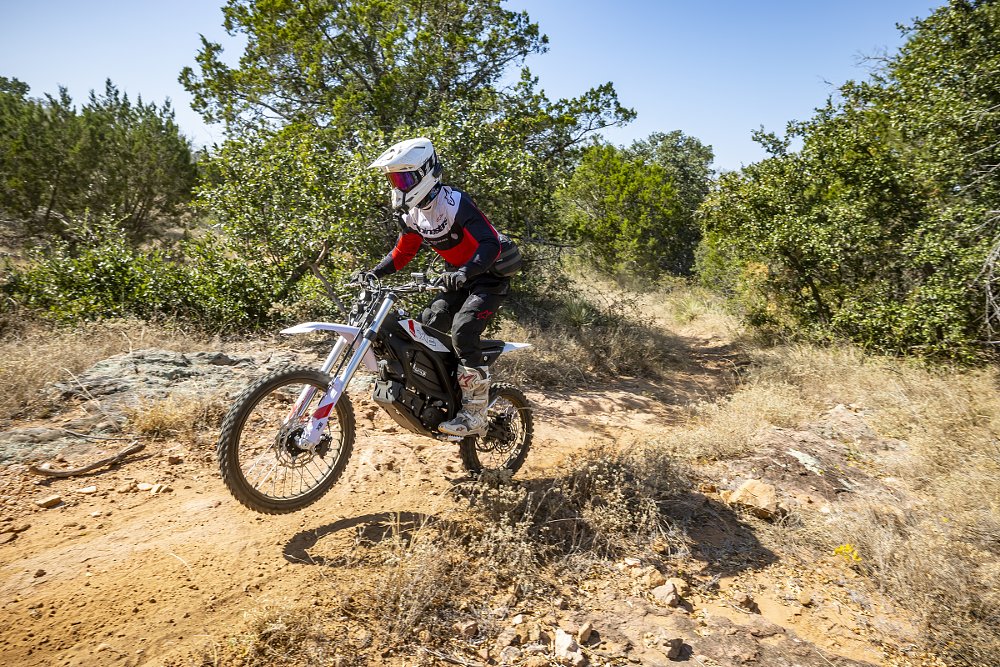
It wasn't until after the test ride that I looked at the XE's curb weight and did a double take. At 223 pounds, it's not going to win any awards for lightest in class. The Beta 430 in my garage weighs only about 20 pounds more. But thanks to the XE's low center of gravity, it feels lighter than it is when you're throwing it around.
Combine that nimble chassis with its 18-inch rear and 21-inch front wheel set and the big X starts to fill a sizable gap in the current market between something like the Surron Ultrabee and a Stark Varg, something I was not expecting. The new Surron Ultrabee HP looks like it should be able to stand toe to toe with the Zero XE and the stat line comparison leans towards the lighter, more powerful Surron, but at the time I'm writing this it appears that finding a new, non-gray-market HP in the United States is an almost impossible task. You can't ride a spec sheet.
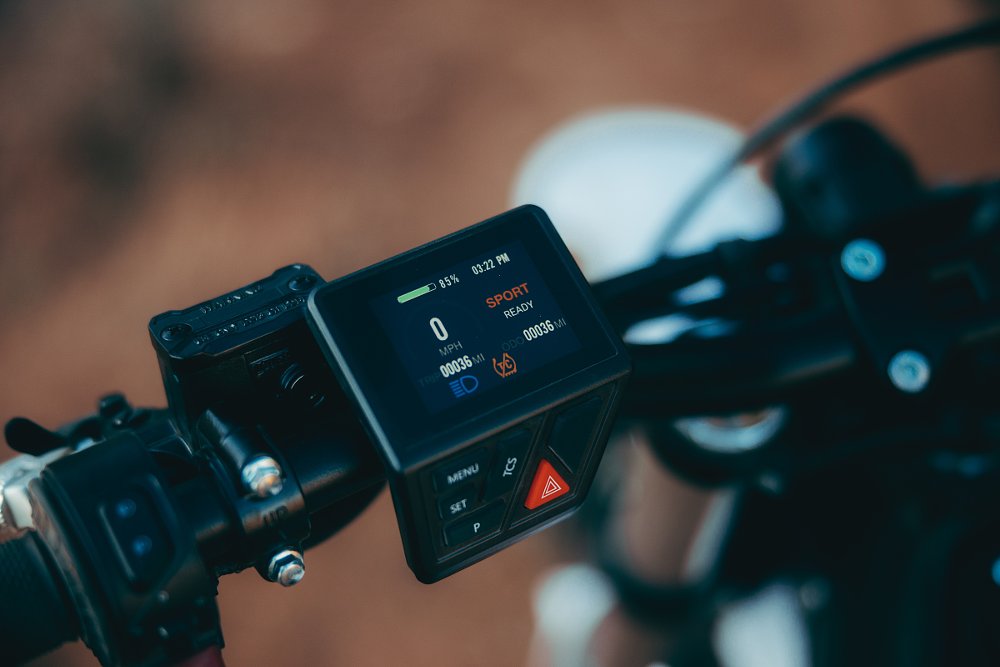
Advantages, disadvantages, and adjustments for going electric
Despite the big grin and dirt mustache tattooed across my face under the setting Texas sun, I did have a few small gripes, a couple of reminders that it takes a minute to adapt to riding electric, and one big unanswered question.
My first quibble was with the finicky assists and safety measures. The XE and XB feature hill hold control… kind of. On both the XE and XB, the rear brake is operated by a lefthand lever, not a foot pedal. When you pull the rear brake lever firmly and then release it at a stop, the X bikes will use the resistance from the motor to hold you in place — for about 10 seconds. Then, with no warning, you will roll downhill in a hurry until you re-arm the system. I found it was more annoying to try to correctly time the reactivation than it was to just hold the brake continuously on longer breaks.
Both bikes also come equipped with a tipover sensor that's supposed to disable the throttle in the event of a fall, but in my one drop with the XB it didn't activate. After a very gentle lowside in the grass, I quickly stood up and grabbed the handlebar to pick up the bike, accidentally twisting the throttle and nearly launching the XB into a different dimension. In a perfect world, I'd have my XE with a lanyard kill switch like those found on personal watercraft, because retraining your brain does take some time when moving to an electric motorcycle.
I was reminded of that the hard way on the obstacle course earlier that morning. The hand-operated rear brake pays off with greater finesse and control, but it takes time to unlearn 10 years of muscle memory. On my second lap of the obstacle course, instead of rolling over the telephone pole on the XB, I decided to do a double blip. I had never tried to do one before so I figured, why not now? I slowly crawled up to the face of the log, released the rear brake, cracked the throttle to loft the front wheel, pulled in the clutch to kill the power while I shifted my weight forward and immediately realized — that's not a clutch. That's my rear brake. Causing me to slam the front end down and absolutely hammer the skid plate of the XB into this poor, unsuspecting telephone pole. I didn't make that mistake again, but it was a stark reminder that there is an adjustment period for those of us who grew up on internal combustion dirt bikes.
Other minor quibbles include the stock CST tires that came on both bikes, which were fine enough for the dry conditions, but the second they wear out I'd opt for some more aggressive rubber. I'd also like some grips that were more plush and tacky.
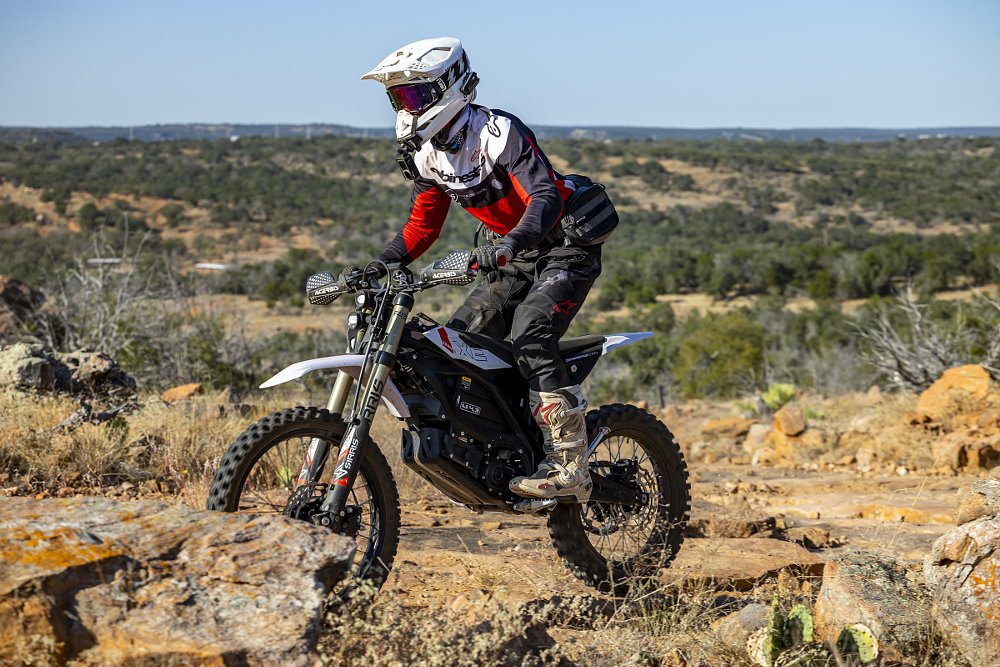
The last elephant I want to address is the range. Throughout the day, all of us in attendance for the media ride were swapping bikes nonstop, which made it nearly impossible to establish a reasonable expectation of range for these bikes. Some had much heavier moto tires and upgraded suspension, and the range of weights for my colleagues easily spanned 100 pounds, so to even speculate about Zero's battery life claims for the X line would be useless. Sounds like a good reason for us to do a long-term review.
Though my time in Austin was brief, it was eye-opening for me. Half of me wonders why it took Zero nearly 20 years to take a crack at something like the XB or XE when the company was founded on such a similar proof of concept, but the other half of me is happy they waited until the tech and demand was ripe for innovation. Zero is in the process of driving dealer expansion with a separate classification for off-road dealers and, according to my local multi-line dealer who happens to also stock Stark and Arctic Leopard EVs, they are "doing it the right way." Zero tells us that getting first-time riders on electric motorcycles builds EV customers for life and I hope they're right, because it's been days and I'm still struggling to wipe the grin off my face.
| 2026 Zero Motorcycles XB | 2026 Zero Motorcycles XE | |
|---|---|---|
| Price (MSRP) | $4,395; $5,095 after Nov. 30 | $6,495; $7,395 after Nov. 30 |
| Drivetrain | 7.5 kW permanent magnet motor, chain final drive | 15.5 kW permanent magnet motor, chain final drive |
| Claimed horsepower | 10 | 20.1 |
| Frame | Aluminum | Aluminum |
| Claimed range | 40 miles at 31 mph | 65 miles at 31 mph |
| Claimed battery capacity | 2.4 kWh nominal | 4.3 kWh nominal |
| Claimed charge time | 2.5 hours, 0% to 95%, Level 1 | 5.0 hours, 0% to 95%, Level 1 |
| Front suspension | Fully adjustable, 7.9 inches of travel | Fully adjustable, 8.7 inches of travel |
| Rear suspension | Fully adjustable, 6.9 inches of travel | Fully adjustable, 9.8 inches of travel |
| Front brake | Single dual-piston caliper, 220 mm disc | Single dual-piston caliper, 240 mm disc |
| Rear brake | Single dual-piston caliper, 203 mm disc | Single dual-piston caliper, 220 mm disc |
| Wheelbase | 49 inches | 53.3 inches |
| Seat height | 32.7 inches | 35.4 inches |
| Tires | CST 70/100-19 front, 90/90-19 rear | CST 70/100-21 front, 90/90-18 rear |
| Claimed weight | 139 pounds | 223 pounds |
| Available | Now | |
| Warranty | Motorcycle, six months; power pack, 12 months | |
| More info | zeromotorcycles.com | zeromotorcycles.com |






